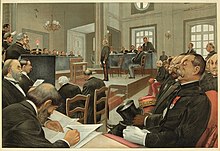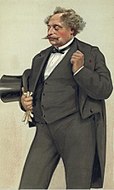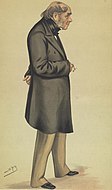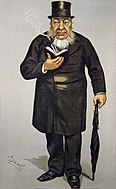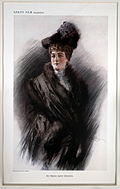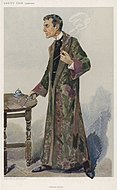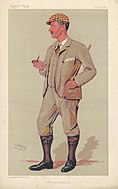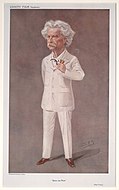
William Makepeace Thackeray was an English novelist and illustrator. He is known for his satirical works, particularly his 1847–1848 novel Vanity Fair, a panoramic portrait of British society, and the 1844 novel The Luck of Barry Lyndon, which was adapted for a 1975 film by Stanley Kubrick.

Vanity Fair is a novel by the English author William Makepeace Thackeray, which follows the lives of Becky Sharp and Amelia Sedley amid their friends and families during and after the Napoleonic Wars. It was first published as a 19-volume monthly serial from 1847 to 1848, carrying the subtitle Pen and Pencil Sketches of English Society, which reflects both its satirisation of early 19th-century British society and the many illustrations drawn by Thackeray to accompany the text. It was published as a single volume in 1848 with the subtitle A Novel without a Hero, reflecting Thackeray's interest in deconstructing his era's conventions regarding literary heroism. It is sometimes considered the "principal founder" of the Victorian domestic novel.
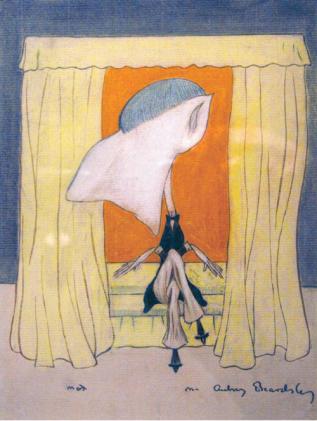
A caricature is a rendered image showing the features of its subject in a simplified or exaggerated way through sketching, pencil strokes, or other artistic drawings. Caricatures can be either insulting or complimentary, and can serve a political purpose, be drawn solely for entertainment, or for a combination of both. Caricatures of politicians are commonly used in newspapers and news magazines as political cartoons, while caricatures of movie stars are often found in entertainment magazines.

Abraham Hayward Q.C. was an English man of letters.

John Leech was a British caricaturist and illustrator. He was best known for his work for Punch, a humorous magazine for a broad middle-class audience, combining verbal and graphic political satire with light social comedy. Leech catered to contemporary prejudices, such as anti-Americanism and antisemitism and supported acceptable social reforms. Leech's critical yet humorous cartoons on the Crimean War helped shape public attitudes toward heroism, warfare, and Britons' role in the world.
Events from the year 1869 in art.

Jacques Joseph Tissot, better known as James Tissot, was a French painter, illustrator, and caricaturist. He was born to a drapery merchant and a milliner and decided to pursue a career in art at a young age, coming to incorporate elements of realism, early Impressionism, and academic art into his work. He is best known for a variety of genre paintings of contemporary European high society produced during the peak of his career, which focused on the people and women's fashion of the Belle Époque and Victorian England, but he would also explore many medieval, biblical, and Japoniste subjects throughout his life. His career included work as a caricaturist for Vanity Fair under the pseudonym of Coïdé.
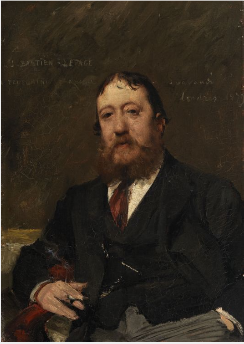
Carlo Pellegrini, who did much of his work under the pseudonym of Ape, was an Italian artist who served from 1869 to 1889 as a caricaturist for Vanity Fair magazine, a leading journal of London society. He was born in Capua, then in the Kingdom of the Two Sicilies. His father came from an ancient land-owning family, while his mother was allegedly descended from the Medici. His work for the magazine made his reputation and he became its most influential artist.

Sir Samuel Luke Fildes was a British painter and illustrator born in Liverpool and trained at the South Kensington and Royal Academy Schools. He was the grandson of the political activist Mary Fildes.

Sir Leslie Matthew Ward was a British portrait artist and caricaturist who over four decades painted 1,325 portraits which were regularly published by Vanity Fair, under the pseudonyms "Spy" and "Drawl". The portraits were produced as watercolours and turned into chromolithographs for publication in the magazine. These were then usually reproduced on better paper and sold as prints. Such was his influence in the genre that all Vanity Fair caricatures are sometimes referred to as "Spy cartoons" regardless of who the artist actually was.

Thomas Gibson Bowles was a British politician and publisher. He founded the magazines The Lady and Vanity Fair, and became a Member of Parliament in 1892. He was also the maternal grandfather of the Mitford sisters.
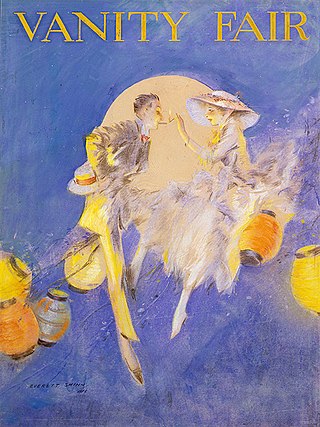
Vanity Fair has been the title of at least five magazines, including an 1859–1863 American publication, an unrelated 1868–1914 British publication, an unrelated 1902–1904 New York magazine, and a 1913–1936 American publication edited by Condé Nast, which was revived in 1983.

Christopher Sykes was an English Conservative politician who sat in the House of Commons from 1865 to 1892. He enjoyed the "intimate friendship" of Edward VII when Prince of Wales and Alexandra of Denmark when Princess of Wales.
Events from the year 1869 in the United Kingdom.

Sir Percy Florence Shelley, 3rd Baronet, was the son of the English poet Percy Bysshe Shelley and his second wife, Mary Wollstonecraft Shelley, novelist and author of Frankenstein. He was the only child of Mary Wollstonecraft Shelley to live beyond infancy. His middle name, possibly suggested by his father's friend Sophia Stacey, came from the city of his birth, Florence in Italy. He had two elder half-siblings, by his father's first marriage to Harriet Westbrook, and three full siblings who died in infancy.
Vincent Brooks, Day & Son was a major British lithographic firm most widely known for reproducing the weekly caricatures published in Vanity Fair magazine. The company was formed in 1867 when Vincent Brooks bought the name, good will and some of the property of Day & Son Ltd, which had gone into liquidation that year. The firm reproduced artwork and illustrations and went on to print many of the iconic London Underground posters of the twenties and thirties before being wound up in 1940.

Liborio Prosperi ('Lib') a.k.a.Liberio Prosperi, was a Papal States-born artist who belonged to a group of international artists producing caricatures for the British Vanity Fair magazine. He contributed 55 caricatures between 1885 and 1903, signed 'Lib', and concentrating mainly on the racing set.

Baron Melchiorre De Filippis Delfico was an Italian artist, composer, singer, conductor, writer, librettist and a master of the Neapolitan art of caricature who inspired, among others, Carlo Pellegrini.

Adriano Cecioni was an Italian artist, caricaturist, and critic associated with the Macchiaioli group.
